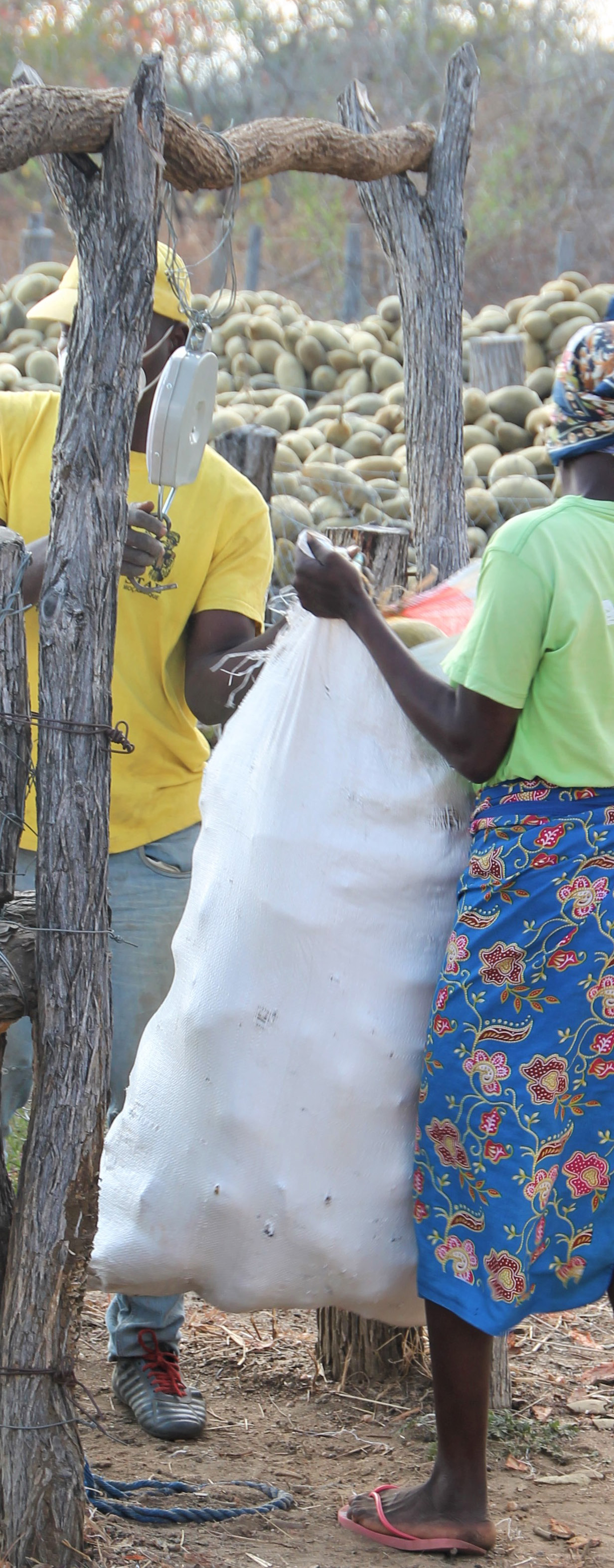Resource information
This reflection paper focuses on the baobab value chain in the north of Manica Province and, specifically, on the ways in which commercialization of the value chain with Baobab Products Mozambique (BPM) is beginning to have an impact on the governance of land and natural resources, including baobab (Adansonium digitata).
From October 2016 to June 2019, the commercial interactions between BPM and the communities, particularly the women who collect the baobab fruit, have taken place in the context of a LEGEND-funded project implemented by Micaia Foundation. The project sought to address two central problems:
- Women baobab harvesters have little or no control over the baobab trees or fruit in the current value chain.
- Women harvesters’ livelihoods are vulnerable to the rapid, uncontrolled deforestation of the baobab zone – a result of a lack of effective land governance and natural resource management.
Baobab is Africa’s ‘superfruit’, rich in nutrients and having demonstrable medicinal properties. Always used as a source of material for food (leaves, fruit, roots), medicine (leaves, bark), and practical goods (cord, crafts), baobab trees are often associated with spirits and cultural traditions, while individual trees (often hollow) have provided hiding places, stores, and even prison cells! The tree is renowned as a source of water in drought periods. The trees also act as a significant resource for a range of wildlife – bees through to bats – while the fruits are enjoyed and consumed by elephants, monkeys, baboons and more.
Informal trade in baobab products within Africa has been ongoing for many centuries, and still dominates the overall value chain in most source countries. Development of a more formal, export-oriented trade came about only in the mid-2000s following the approval of the powder as a food product for consumption in the European Union (EU) under the Novel Food Regulations in 2007 and later in the United States through FDA (Food and Drug Administration) approval. The size of the resource base within Africa, and the recognition of the opportunities opened up as a result of the formal trading sector, has seen a big increase in supply, especially in recent years (from 2016). The quality of powder supplied varies greatly, as does the price. As large-scale manufacturing companies are increasingly looking at baobab as a potential ingredient, thus moving the product out of the exclusively high-end or niche ‘healthfood’ sector, there are both opportunities (increasing scale) and challenges (commoditization leading to low returns and undermining efforts in Africa to add value at source). These issues are explored more fully in other Micaia publications. For this paper, the focus is on whether and to what extent commercialization is having an impact on the traditional forms of governance that apply to baobab in Mozambique.

